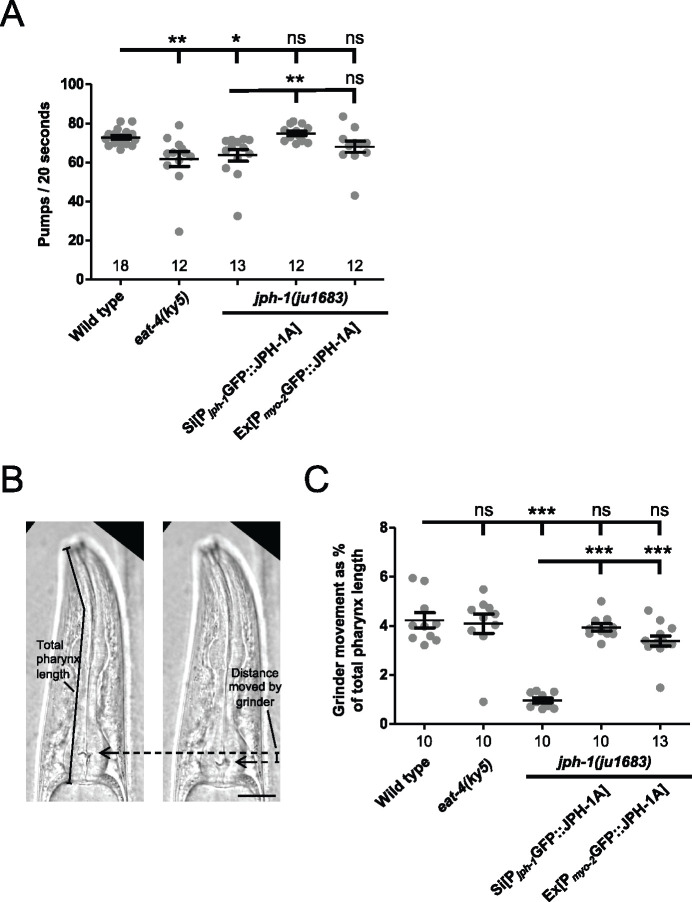Figure 3.
jph-1 is required in the pharyngeal muscle for normal rate and strength of pumping. (A) jph-1 is required for normal pharyngeal pumping rate. jph-1(ju1683) mutants had reduced pumping rate, which was rescued by expression of JPH-1A by the jph-1 promoter [Pjph-1-GFP::JPH-1A(juSi387)] but not by expression in the pharyngeal muscle [Pmyo-2-GFP::JPH-1A(juEx8041)]. eat-4(ky5) loss-of-function mutants had reduced pumping rate, as previously reported (Lee et al. 1999). Number of animals per genotype indicated above X-axis tick marks. Data are shown as individual data points and mean ± SEM. Statistics: Nonparametric Kruskal–Wallis test with Dunn’s multiple comparison test. ns, not significant, *P < 0.05, **P < 0.01. (B) Pumping strength was determined by the distance moved by the grinder. The image on the left shows the head of the animal just before the pump is initiated, with the grinder position indicated by the arrow. The image on the right shows the animal mid-pump when the grinder has moved to its fullest extent. The distance moved by the grinder between the two images was normalized to the total length of the pharynx to quantify pumping strength. Scale bar, 25 µm. (C) Quantification of pharyngeal pumping strength. jph-1(ju1683) mutants had substantially reduced grinder movement, which was rescued by expression of JPH-1A by the jph-1 promoter [Pjph-1-GFP::JPH-1A(juSi387)] or in the pharyngeal muscle [Pmyo-2-GFP::JPH-1A(juEx8041)]. Number of animals per genotype indicated below X-axis tick marks. Data are shown as individual data points and mean ± SEM. Statistics: One-way ANOVA with Tukey’s post-test. ns, not significant, ***P < 0.001.

